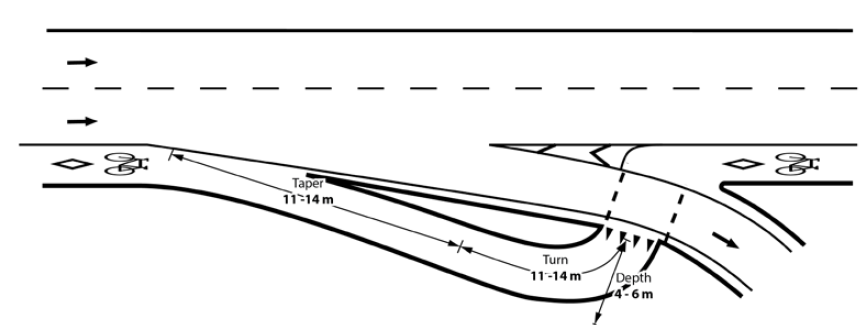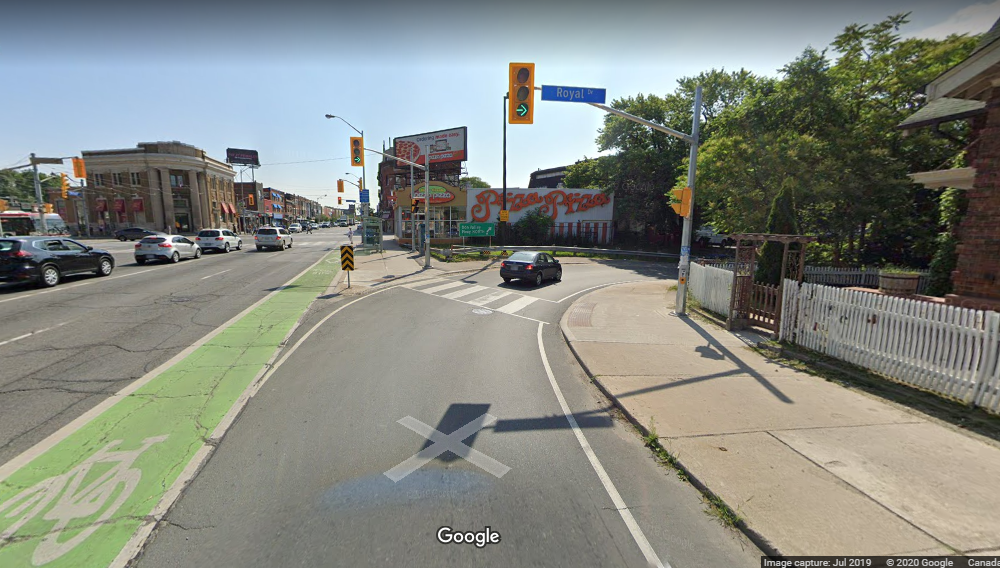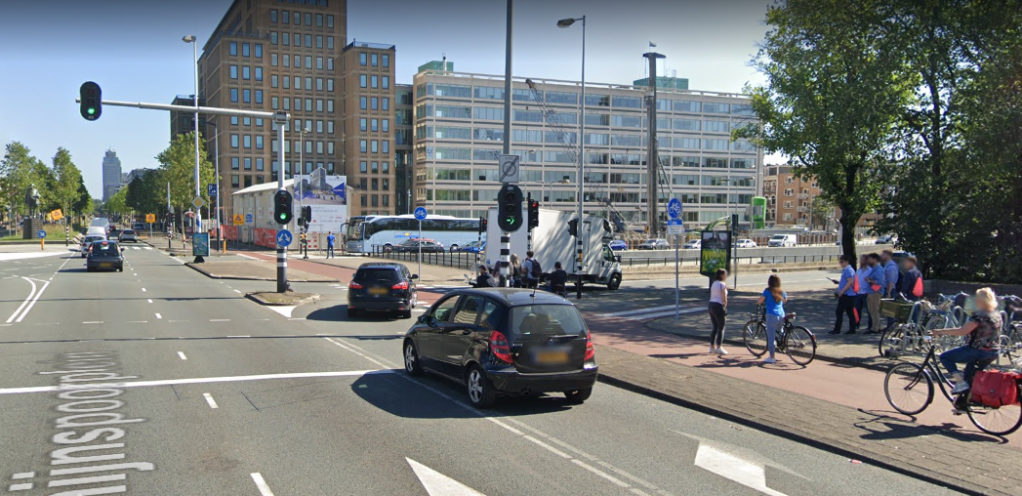You are using an out of date browser. It may not display this or other websites correctly.
You should upgrade or use an alternative browser.
You should upgrade or use an alternative browser.
Road Safety & Vision Zero Plan
- Thread starter salsa
- Start date
crs1026
Senior Member
Item going to City Council tomorrow. Quarterly report on addition of bicycle lanes, sidewalks, traffic control.
Remarkable number of letters attached to the item.
- Paul
Remarkable number of letters attached to the item.
- Paul
Northern Light
Superstar
Item going to City Council tomorrow. Quarterly report on addition of bicycle lanes, sidewalks, traffic control.
Remarkable number of letters attached to the item.
- Paul
Indeed there are.
One to note, is Canada Post, raising objections to the Woodfield changes, in particular, the extension of said street from Eastern to Lakeshore.
I reviewed all the other electronically linked correspondence.
All were in support except one.
Councillor Holyday wrote to oppose the lanes on Martin Grove and on Rathburn.
allengeorge
Senior Member
Will that be enough to sink that section?Councillor Holyday wrote to oppose the lanes on Martin Grove and on Rathburn.
Northern Light
Superstar
Will that be enough to sink that section?
I hope not.
Certainly its not good when a Councillor opposes something in their ward.
The good news is that this particular councillor is doesn't have a lot of allies on Council.....
Still.......its wait and see mode.
W. K. Lis
Superstar
London (Ontario) police launch huge probe into crash that killed four pedestrians
From link.A massive police investigation is underway Monday after four pedestrians were killed at a northwest London intersection in one of the deadliest crashes in city history.
Emergency crews responded at 8:40 p.m. Sunday to reports of a vehicle striking pedestrians at Hyde Park and South Carriage roads, where one woman was pronounced dead at the scene, police said.
A man, woman and teenager were taken to the hospital and later died. A second minor remains in hospital with serious but non-life threatening injuries, police said.
A man, 20, was later arrested outside Cherryhill Mall, police said. A single police cruiser was parked outside the Oxford Street mall Monday morning, where yellow police tape cordoned off a small section of the parking lot.
The suspect, whose name hasn’t been released, was scheduled to appear in court Monday afternoon. No charges had been laid in the case as of Monday morning.
At the scene of the crash, dozens of police officers – both uniformed and detectives – assembled and a mobile command centre was set up in a nearby parking lot. The major crimes and traffic management units are leading the probe.
Investigators flew a drone over the intersection, where there was no visible sign of the crash except for police pylons placed on the ground of the southwest corner. Eleven police officers formed a line and slowly walked in unison through the scene, scouring the ground for evidence.
Police have released few details about the crash or the victims – their names, ages and relationship to each other remain unknown – but said a press conference will likely be held later Monday.
“The direction of travel hasn’t been released at this time,” Const. Sandasha Bough said when asked about the vehicle involved in the fatal crash.
One woman at a nearby house said she often walks her two-year-old grandson on Hyde Park Road, leaving her rattled by the crash.
The area of the crash is a unique spot – filled with big-box stores and strip malls along the four-lane Hyde Park Road. It’s a bustling shopping node, but with high-density residential neighbourhoods around it. It’s also filled with undeveloped parcels of land. People out for walks or runs are common along the major north-south Hyde Park Road.
The intersection where the crash happened – Hyde Park and South Carriage – is a good example. The intersection includes a popular hardware store with condo towers behind it; townhouses across the road; and some empty plots nearby.
The deaths have shaken the city, even as details remain unclear, and made headlines provincewide. “My thoughts are with those who were taken from their loved ones too soon,” London North Centre Liberal MP Peter Fragiskatos wrote on social media. “Rest in peace and may God give strength to the family and friends of the victims.”
Mayor Ed Holder called the deaths “an unspeakable tragedy.”
Anyone with information is asked to call the London police at (519) 661-5670 or Crime Stoppers at 1-800-222-TIPS (8477).
AlvinofDiaspar
Moderator
I am afraid preliminary reports suggest this isn't a case of unsafe street design/general road safety issue - but something targeted. Probably don't belong to this thread.
AoD
They have now laid murder charges, so yes, not for this thread.
Northern Light
Superstar
They have now laid murder charges, so yes, not for this thread.
Agreed.
As it is, however, newsworthy, we should find a logical thread for this discussion.
*****
Looks to be an anti-Muslim hate crime; terrorism/hate-crime charges are being considered.
per
from:
I have started a thread in General Discussions: https://urbantoronto.ca/forum/threads/london-vehicular-attack.32405/
crs1026
Senior Member
There has been an extensive public consultation on this project. Report here.I hope not.
Certainly its not good when a Councillor opposes something in their ward.
The good news is that this particular councillor is doesn't have a lot of allies on Council.....
Still.......its wait and see mode.
It will be interesting to see whether this Councillor's views line up in relation to his constituents.
- Paul
Admiral Beez
Superstar
We need to do what they do in Manhattan, where there’s a police officer nearly on every corner.Slowly, slowly we are starting to figure it out. I have no idea why we need to be so cautious. Why not pilot a few all-out intersections in terms of calming and safety features and show that things that work elsewhere also work here, instead of this infuriating incrementalism.
W. K. Lis
Superstar
Study: Complete Streets Lead to Better Crash Coverage
From link.
Complete streets policies don’t just reduce car crashes — they may even improve how those crashes are covered by the media.
That’s one finding of a 2020 study by Nick Suarez, then a precocious junior at Bowdoin College in Maine, who analyzed 76 local news articles from 2018 and 2019 about crashes involving pedestrians and cyclists.
What he found was depressing, if perhaps unsurprising: fewer than 10 percent of those articles mentioned anything about the crash beyond its immediate details — the who, when and where. Instead, many stories featured the sort of victim-blaming that safe streets advocates have come to know and loathe (whether victims were wearing dark clothing or walking outside a crosswalk), and ignored systemic factors that lead to crashes (high speed limits, lackluster pedestrian and bike infrastructure, etc.).
As a result, readers could be left thinking that road violence is “just an accident” rather than the result of choices made by drivers and transportation officials.
But here’s the good news, per Suarez: most of the articles that did present more holistic accounts of crashes came from media outlets in communities that had adopted or considered policies aimed at making roads safe for all users — not just drivers.
“When jurisdictions had complete streets policies, the crash reports coming out of there were more likely to be intertwined with those conversations of pedestrian safety as opposed to just this individual incident,” Suarez, 22, said in an interview. “There was a correlation there between complete streets policies that a municipality had and what the reports from that jurisdiction said.”
The more thoughtful articles contextualized crash details with information on infrastructure projects and transportation studies, pedestrian safety meetings, prior accidents and road safety legislation, said Suarez, who is beginning a master’s program in urban planning at University of Southern California this fall.
Suarez’s findings complement a robust body of academic literature showing how news reports on car crashes typically focus on the actions of pedestrians and cyclists instead of drivers, omit relevant statistics, and ignore broader factors that may have played a role, like street design, policies and laws, and vehicle speed and weight.
One 2019 study, which looked at 200 news articles about pedestrian and cyclist crashes in 2018, found nearly half of them referred to the incidents as “accidents,” which rhetorically downplays aspects of the collision that may have been preventable. Very few of them mentioned the number of other crashes in the area or how the road was designed.
Another study reviewed close to a decade of news stories about fatal crashes involving cyclists in a Florida county with particularly dangerous roads. There, too, most stories were “episodic rather than thematic, focusing on the traffic event and the parties involved in the crash, particularly the bicyclist,” the report reads. “Vocabulary, grammatical structure, and narrative framing of news reports largely functioned to remove blame from the motorist and to highlight the bicyclist’s actions.”
These tropes — which course through transportation reporting in communities nationwide and every day — impact how people see the issue of traffic violence. That became clear to the researchers behind a 2019 study who presented people with three versions of a news story about the same crash: one that focused on the pedestrian, another on the driver and a third that framed the crash thematically.
The results were decisive. Readers assigned more blame to the driver if they read the driver-focused version, and to “other” factors if they read the thematic version. The thematic version also increased support for pedestrian infrastructure.
“Seemingly trivial editorial differences have been shown to influence how readers make sense of a story,” the report’s authors wrote. “These changes also influence how readers would like policymakers to respond, in turn influencing which policies are implemented.”
The tendency of local crash reports in Maine to hew to these national trends is well known to Eliza Cress, an outreach and design manager for the Bicycle Coalition of Maine.
“The language surrounding the incidents is unfortunately biased in many cases,” she said.
That made Suarez’s findings on the dearth of good local coverage no surprise to Cress, but she said she valued the attention his study brought to “the power of talking about these things as the result of a larger system,” not just “as one offs.”
Adopting a more holistic approach to crash coverage might require only minor rhetorical changes, but it could have an outsized impact on how readers view the issue, Cress said.
“If people don’t see this as a problem that can be fixed, then there’s not going to be a lot of room to make improvements,” she said.
W. K. Lis
Superstar
Boy dies after being struck by car while riding his bicycle in Markham
11-year-old boy died in hospital after collision near Highway 407 and Warden Avenue
From link.

An 11-year-old boy died in hospital late Thursday after he was struck by a driver in Markham, provincial police say.
OPP said they received a call just after 4 p.m. about a collision on the northbound ramp from Warden Avenue heading toward Highway 407 eastbound.
The child was riding a bicycle on Warden Avenue and was struck by a car while crossing the ramp, Sgt. Kerry Schmidt said.
The driver remained at the scene and spoke with police while the child was taken to a trauma centre, where he later died.
The real sad news is that instead of looking at ways to change the road and highway design to reduce the possibility of collisions, they blame the victim.Northbound lanes of Warden Avenue were closed temporarily while police investigated the collision.
Police are appealing to witnesses to reach out with any information. All lanes have since reopened.
Why Did the Pedestrian Cross the Freeway?
From link.

An improved design compared to the floating bike lane, where cyclists bend out in advance of the freeway crossing to cross perpendicular to vehicles.

A free-flow on-ramp that was recently signalized to improve crossing safety for pedestrians. In this case, cyclists use a floating bike lane and bypass the signal, but it is possible to configure the design so that cyclists cross on a signal as well.

An on-ramp at a signalized intersection. Motorists turn 90 degrees onto the on-ramp and pedestrians have priority at the crossing.

The same interchange in 2002 in its original configuration with a free-flow on-ramp.

An urban freeway on-ramp where right-turning vehicles have a separate signal from pedestrians and cyclists, ensuring that these users do not conflict with each other.
Northern Light
Superstar
Boy dies after being struck by car while riding his bicycle in Markham
11-year-old boy died in hospital after collision near Highway 407 and Warden Avenue
From link.


The real sad news is that instead of looking at ways to change the road and highway design to reduce the possibility of collisions, they blame the victim.
Why Did the Pedestrian Cross the Freeway?
From link.

An improved design compared to the floating bike lane, where cyclists bend out in advance of the freeway crossing to cross perpendicular to vehicles.

A free-flow on-ramp that was recently signalized to improve crossing safety for pedestrians. In this case, cyclists use a floating bike lane and bypass the signal, but it is possible to configure the design so that cyclists cross on a signal as well.

An on-ramp at a signalized intersection. Motorists turn 90 degrees onto the on-ramp and pedestrians have priority at the crossing.

The same interchange in 2002 in its original configuration with a free-flow on-ramp.

An urban freeway on-ramp where right-turning vehicles have a separate signal from pedestrians and cyclists, ensuring that these users do not conflict with each other.
In urban areas, at the very least (and all areas would be ideal), there cannot be slip lanes leading into ramp access.
Slip lanes are effectively instructions to drivers to begin gaining speed immediately on entering the lane, prior to being on the actual ramp.
Many ramp designs actually reflect this, in being a bit short to serve as full on acceleration lanes to highway speed.
So a driver entering a highway from a 50km/ph road, is intuitively being told to hit 70km/ph by the time they turn parallel to the highway, even if signage instructs differently.
Highway access ramps should be hard right turns, from a regulated intersection with the acceleration done entirely on the ramp itself, after passing any pedestrian/cyclist crossing.
This would likely require lengthening several ramps to provide more acceleration room at highway level.
An expensive, but very justifiable investment.
Further, where bike lanes cross a highway, they need to have cycle track style protection wherever feasible.
Clearly that protection won't exist when literally crossing the highway access point; but it would serve to further reduce conflicts and risks, and slow drivers from making sharp or quick turns, if that meant mounting a curb.
Last edited:




